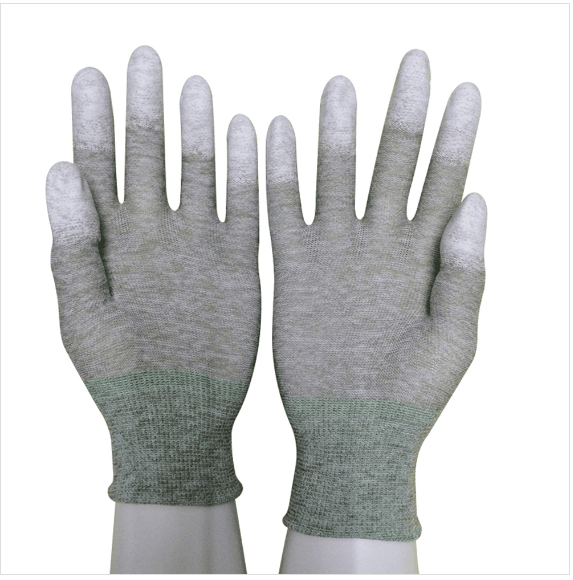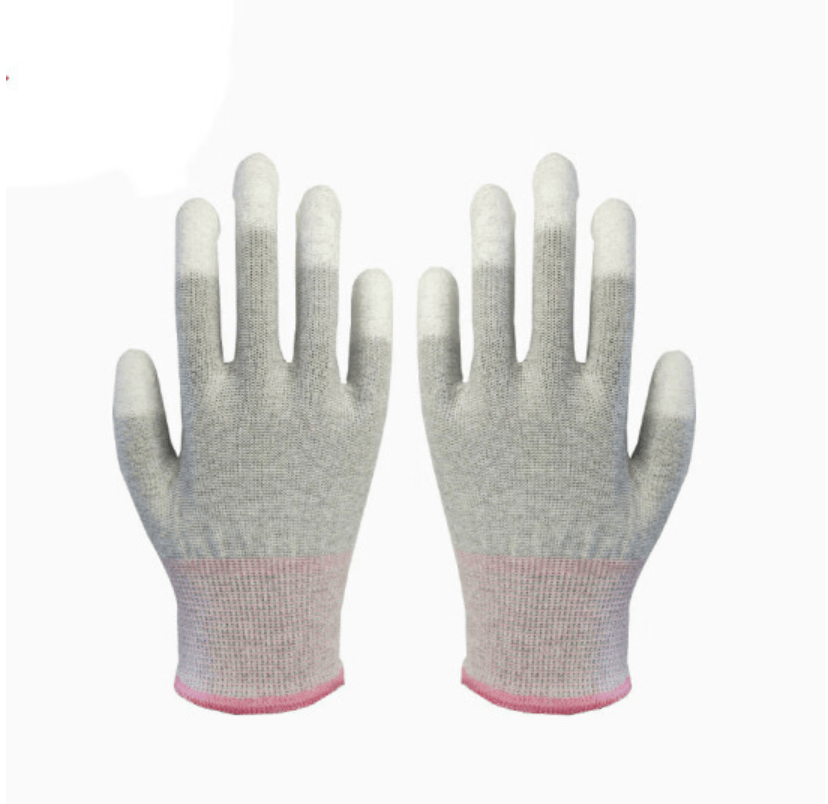What Are ESD Gloves?
ESD (Electrostatic Discharge) gloves are specialized gloves designed to prevent static electricity buildup and safely dissipate electrostatic charges. They are commonly used in electronics manufacturing, cleanrooms, and static-sensitive environments to protect delicate components from ESD damage.
🔹 Key Features of ESD Gloves
✅ Prevents Electrostatic Discharge (ESD) – Protects sensitive electronics from static damage.
✅ Made from Conductive or Dissipative Materials – Often contain carbon fibers, copper fibers, or conductive coatings.
✅ Lightweight & Breathable – Made of nylon, polyester, or PU-coated fabric for comfort and dexterity.
✅ Washable & Reusable – Can be used multiple times, reducing costs.
🔹 Types of ESD Gloves & Their Uses
1️⃣ Fabric ESD Gloves (Carbon or Copper Fiber Gloves)
🔹 Use: Handling sensitive electronics, circuit boards, and microchips.
🔹 Material: Nylon/polyester with woven carbon or copper fibers to dissipate static.
🔹 Feature: Lightweight, breathable, and flexible for precise work.
 Copper Fiber Gloves ESD
Copper Fiber Gloves ESD
 Carbon Fiber Gloves ESD
Carbon Fiber Gloves ESD
2️⃣ PU-Coated ESD Gloves
🔹 Use: Assembly work where grip and anti-static protection are needed.
🔹 Material: Fabric gloves with a polyurethane (PU) coating on the fingertips or palm.
🔹 Feature: Improves grip and durability while reducing static.

🔹 Where Are ESD Gloves Used?
✅ Electronics Manufacturing – Handling PCBs, microchips, hard drives.
✅ Cleanrooms & Laboratories – Contamination-free environments.
✅ Semiconductor Industry – Prevents static damage to delicate components.
✅ Aerospace & Automotive – Protects sensors and circuit boards.
✅ Medical Device Assembly – Ensures static-free, dust-free production.
🔹 Are ESD Gloves Necessary?
Yes! If you work with static-sensitive equipment, ESD gloves prevent costly damage, improve product quality, and enhance workplace safety.
Would you like recommendations on which ESD gloves fit your needs? 😊
